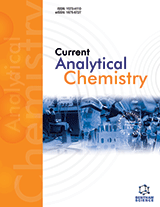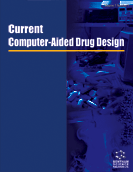Abstract
The biology of the mitochondrial electron transport chain is summarized. Our approach to the mechanism of uncouplers, inhibitors, and toxins is based on electron transfer (ET) and reactive oxygen species (ROS). Extensive supporting evidence, which is broadly applicable, is cited. ROS can be generated either endogenously or exogenously. Generally, the reactive entities arise via redox cycling by ET functionalities, such as, quinones (or precursors), metal compounds, imines (or iminiums), and aromatic nitro compounds (or reduced metabolites). In most cases, the ET functions are formed metabolically. The toxic substances belong to many categories, e.g., medicinals, industrial chemicals, abused drugs, and pesticides. Structure-activity relationships are presented from the ET-ROS perspective, and also quantitatively. Evidence for the theoretical framework is provided by the protective effect of antioxidants. Among other topics addressed are proton flux, membrane pores, and apoptosis. There is support for the thesis that mitochondrial insult may contribute to illnesses and aging.
Keywords: mitochondria, electron transfer, reactive oxygen species, structure-activity relationship, antioxidants, illness, aging
Current Medicinal Chemistry
Title: Mechanism of Mitochondrial Uncouplers, Inhibitors, and Toxins: Focus on Electron Transfer, Free Radicals, and Structure -Activity Relationships
Volume: 12 Issue: 22
Author(s): Peter Kovacic, Robert S. Pozos, Ratnasamy Somanathan, Nandita Shangari and Peter J. O'Brien
Affiliation:
Keywords: mitochondria, electron transfer, reactive oxygen species, structure-activity relationship, antioxidants, illness, aging
Abstract: The biology of the mitochondrial electron transport chain is summarized. Our approach to the mechanism of uncouplers, inhibitors, and toxins is based on electron transfer (ET) and reactive oxygen species (ROS). Extensive supporting evidence, which is broadly applicable, is cited. ROS can be generated either endogenously or exogenously. Generally, the reactive entities arise via redox cycling by ET functionalities, such as, quinones (or precursors), metal compounds, imines (or iminiums), and aromatic nitro compounds (or reduced metabolites). In most cases, the ET functions are formed metabolically. The toxic substances belong to many categories, e.g., medicinals, industrial chemicals, abused drugs, and pesticides. Structure-activity relationships are presented from the ET-ROS perspective, and also quantitatively. Evidence for the theoretical framework is provided by the protective effect of antioxidants. Among other topics addressed are proton flux, membrane pores, and apoptosis. There is support for the thesis that mitochondrial insult may contribute to illnesses and aging.
Export Options
About this article
Cite this article as:
Kovacic Peter, Pozos S. Robert, Somanathan Ratnasamy, Shangari Nandita and O'Brien J. Peter, Mechanism of Mitochondrial Uncouplers, Inhibitors, and Toxins: Focus on Electron Transfer, Free Radicals, and Structure -Activity Relationships, Current Medicinal Chemistry 2005; 12 (22) . https://dx.doi.org/10.2174/092986705774370646
| DOI https://dx.doi.org/10.2174/092986705774370646 |
Print ISSN 0929-8673 |
| Publisher Name Bentham Science Publisher |
Online ISSN 1875-533X |
 26
26
- Author Guidelines
- Bentham Author Support Services (BASS)
- Graphical Abstracts
- Fabricating and Stating False Information
- Research Misconduct
- Post Publication Discussions and Corrections
- Publishing Ethics and Rectitude
- Increase Visibility of Your Article
- Archiving Policies
- Peer Review Workflow
- Order Your Article Before Print
- Promote Your Article
- Manuscript Transfer Facility
- Editorial Policies
- Allegations from Whistleblowers
- Announcements


























